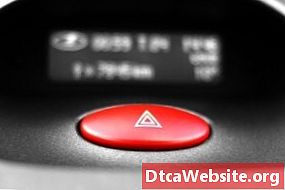
Contenu

Contrary to popular belief, motorcycles arent just two-wheeled cars. While bikes use many of the same basic parts and operating principles, the bike as a whole often does without certain components that might add unnecessary cost, complexity and weight. This makes tuning motorcycles a slightly more delicate affair, especially where changes in airflow into and out of the engine are concerned.
Exhaust and Airflow Basics
Exhaust systems make power by getting used gases out of the engine, which makes room for more air and fuel in the cylinder. More air going in means more fuel burned, which means more horsepower. On a carbureted engine, this reduction in back pressure is nothing but good; the carb is a combination airflow and fuel-metering device, so it can compensate for extra airflow going into the engine up to the point that the carburetor venturi runs out of airflow. But even so, that additional airflow can necessitate jet changes in the carburetor to supply the additional fuel required to match that airflow.
Motorcycle Fuel Injection
Your average fuel-injected automobile has three or more airflow and air-quality monitoring devices in the intake: a mass-airflow sensor, manifold absolute pressure sensor, intake air temperature sensor and barometric pressure sensor among them. An oxygen sensor monitors oxygen content of the gas coming out. Fuel-injected bikes often do without some or even all of these sensors, relying solely upon a preprogrammed fuel and spark map calibrated to the engines stock airflow parameters. In cases like this, the computer is almost flying blind, using little more than rpm and crankshaft position to modulate fuel injection.
Exhaust Consequences
Because the computer has no idea how much air is going through the motor, increasing airflow through the engine can only cause it to run lean. Not only will running lean cost you horsepower, it may very well destroy the engine. The best-case scenario is that fuel fails to completely burn in the cylinder, igniting in the exhaust tube when the throttle closes during shifting and deceleration. The resulting lean backfire causes a rifle shot report to issue from the pipes, potentially damaging the muffler and notifying everyone for a half mile that you didnt bother to reprogram your computer. The worst-case scenario is total engine meltdown when excessive temperatures in the cylinder overwhelm your bikes cooling system.
Two-Stroke Troubles
You might be able to get away with a stock computer on a four-stroke, fuel-injected engine, particularly if its a more sophisticated design that uses some sort of airflow-monitoring device. Two-strokes, however, are an entirely different matter. Two-stroke engines typically use an expansion chamber in the exhaust to reflect pressure pulses back into the engine, which effectively "supercharges" the motor at certain rpm ranges. Differently shaped chambers placed at varying distances from the motor change the chambers operational range. In cases like this, you may require not only changes to the computer, but some porting work on the engine to optimize it for the new pipe.


